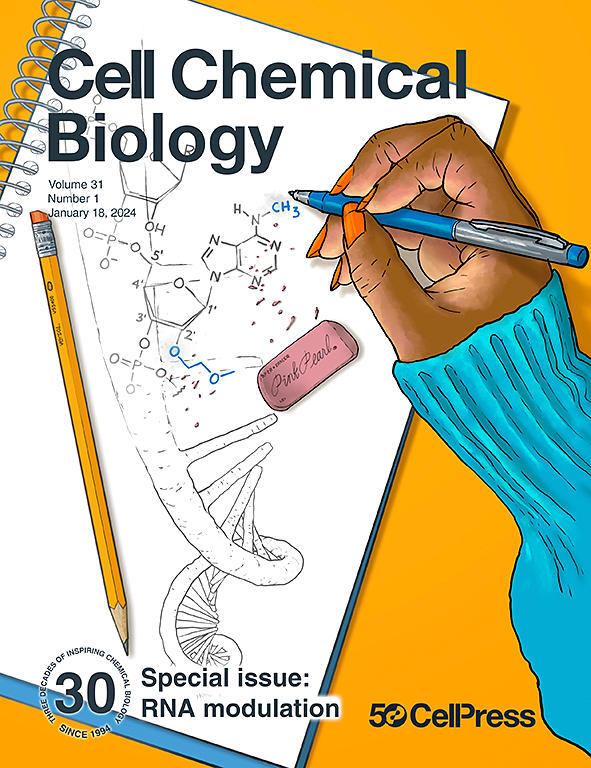Sweet signaling for ferroptosis
IF 7.2
1区 生物学
Q1 BIOCHEMISTRY & MOLECULAR BIOLOGY
引用次数: 0
Abstract
A recent study published in Nature Cell Biology by Zhang et al. has uncovered a critical role for O-GlcNAcylation in sensing and regulating ferroptosis.1 Ferroptosis-induced ROS promotes OGT-mediated FOXK2 O-GlcNAcylation, driving its nuclear translocation to upregulate SLC7A11 and suppress cell death. This axis fuels HCC progression and therapy resistance, highlighting its therapeutic potential.
铁下垂的甜蜜信号
Zhang等人最近发表在Nature Cell Biology上的一项研究揭示了o - glcnac酰化在感知和调节铁凋亡中的关键作用铁凋亡诱导的ROS促进ogt介导的FOXK2 o - glcn酰化,驱动其核易位上调SLC7A11并抑制细胞死亡。这条轴促进HCC的进展和治疗抵抗,突出了其治疗潜力。
本文章由计算机程序翻译,如有差异,请以英文原文为准。
求助全文
约1分钟内获得全文
求助全文
来源期刊

Cell Chemical Biology
Biochemistry, Genetics and Molecular Biology-Molecular Medicine
CiteScore
14.70
自引率
2.30%
发文量
143
期刊介绍:
Cell Chemical Biology, a Cell Press journal established in 1994 as Chemistry & Biology, focuses on publishing crucial advances in chemical biology research with broad appeal to our diverse community, spanning basic scientists to clinicians. Pioneering investigations at the chemistry-biology interface, the journal fosters collaboration between these disciplines. We encourage submissions providing significant conceptual advancements of broad interest across chemical, biological, clinical, and related fields. Particularly sought are articles utilizing chemical tools to perturb, visualize, and measure biological systems, offering unique insights into molecular mechanisms, disease biology, and therapeutics.
 求助内容:
求助内容: 应助结果提醒方式:
应助结果提醒方式:


